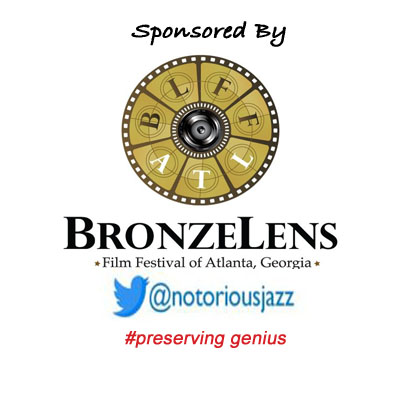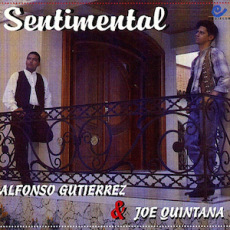
Daily Dose Of Jazz…
Joe Quintana was born in Aguadilla, Puerto Rico on August 21, 1969 and raised in a bicultural environment as a military brat. It was a blessing for a young musician to absorb so many influences that come with international travel. His parents, being appreciative of all musical genres and styles, made sure that he and his brothers were exposed to music at home.
After his formative early years, by 1995 Joe had set up his own band and began playing in Rincon, Puerto Rico as the house band at the Calypso Café. This led to other gigs and many mutations of his bands over the years. He is still very active in the area.
Joe’s guitar styling is very much in synchronization with just the right nuance in relation to the mood he wants to portray. Adept on the acoustic as an accompanist, and is at home unplugged as he is in the electric blues setting or showcased on Latin jazz/rock numbers.
He is either a sideman for live performances or studio recordings, but usually as the leader of his own outfit. His association and collaborations with his brothers has been the catalyst for his own forays into exploring his individual direction as well.
Guitarist Joe Quintana, who is the quintessential journeyman, continues to play every weekend and many week nights and plays a full repertoire for the locals.
More Posts: bandleader,guitar,history,instrumental,jazz,music
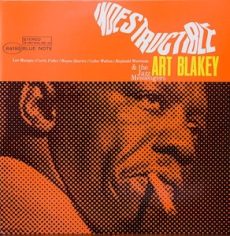
Requisites
Indestructible! ~ Art Blakey and The Jazz Messengers | By Eddie Carter
For over three decades, Art Blakey made an indelible mark on jazz, both as a dynamic drummer and a visionary band leader. His creative drive propelled The Jazz Messengers to the forefront of the jazz world, earning them international acclaim as one of the genre’s premier ensembles. By 1964, the group was facing a turning point: Wayne Shorter was preparing to leave for the Miles Davis Quintet, and both Cedar Walton and Reggie Workman were set to embark on solo careers. This week’s featured album from the library is Indestructible (Blue Note BLP 4193/BST84193), Blakey’s final session for Blue Note. Intriguingly, the album wasn’t released until 1966, making its debut with a powerful, unforgettable presence.
Art is accompanied by Lee Morgan on trumpet, Curtis Fuller on trombone, Wayne Shorter on tenor sax, Cedar Walton on piano, and Reggie Workman on bass. My copy of the album is the 1985 Toshiba-EMI Limited Japanese stereo reissue utilizing the original catalog number. The Egyptian, by Curtis Fuller, which opens the first side, sets the tone with a relaxed, mid-tempo beat. The trio’s lengthy conversation leads to the front line’s irresistibly catchy melody. Curtis goes to work first, establishing a laid-back mood, then Wayne provides the song’s most dventurous solo, which nearly steals the spotlight. Lee injects a burst of energy into a swinging improvisation next. Finally, Cedar wraps up things with a superb statement, leading to the ensemble’s ending theme and fadeout.
Curtis Fuller’s Sortie opens with a blues-inspired introduction, drawing the ensemble into a smooth, medium-tempo melody. Lee begins the opening solo impressively, then Wayne executes a soulful, down-home statement. Curtis steps in with a lively, toe-tapping reading next, after which Cedar presents his ideas on the final performance perfectly until the group comes to a graceful closing chorus and gentle fade. On the second side, Calling Miss Khadija by Lee Morgan starts with Reggie, Cedar, and Art, setting the lively mood for the track’s vivacious theme. Lee ignites the opening statement with his energetic playing. Wayne continues the momentum with swinging, expressive lines. Curtis then delivers a solo rooted in blues, leading into Cedar’s scintillating reading, followed by Art’s brief but memorable presentation, before the ensemble’s closing chorus softly dissolves.
When Love Is New by Cedar Walton is a gorgeous ballad that begins with the ensemble’s unified introduction, then gives way for Wayne to shape the beautiful melody and a sprightly, breezy lead solo. Lee follows with an easy swing in his tone and a steady sureness until the saxophonist returns to pilot the group back to the closing chorus and a soft summation. Mr. Jin by Wayne Shorter showcases his knack for weaving an intricate, adventurous melody with an
Oriental flavor. Art sets the tone for the ensemble’s precise interplay, then Wayne steps up first with ample room to stretch out on the opening statement. Lee responds to the saxophonist with bright, lively phrases, leading back to the sextet’s theme reprise and the trio’s slow fadeout.
The chemistry among the musicians on Indestructible is truly remarkable. Art Blakey created a space where creativity flourishes and daring improvisation thrives. This approach yields performances with vibrant energy, yet remains disciplined and refined. Every member of the ensemble is given room to shine individually without ever losing their unmistakable coherence. Lee Morgan’s trumpet stands out with vibrant flair, while Curtis Fuller’s trombone adds a rich, soulful layer. Wayne Shorter’s tenor saxophone brings an alluring, mysterious edge. At the heart of the ensemble, Cedar Walton and Reggie Workman provide a steadfast and fluid foundation of rhythms and harmonies, completing what stands as one of the finest incarnations of the Jazz Messengers under Art’s leadership.
Alfred Lion produced the album, and Rudy Van Gelder was behind the recording console. The sound quality of this Toshiba-EMI reissue is absolutely stunning, with a superb soundstage that transports the listener to the studio as the musicians play. If you’re already a fan of Art Blakey and The Jazz Messengers, or simply in the mood for some hard bop to unwind after a long day, I highly recommend checking out Indestructible on your next record-shopping trip. It’s an outstanding album that promises countless hours of rewarding listening. Additionally, as Art Blakey’s swan song for the label and the three departing members, it is sure to be cherished by both newcomers and seasoned fans alike!
© 2025 by Edward Thomas Carter
More Posts: choice,classic,collectible,collector,drums,history,instrumental,jazz,music
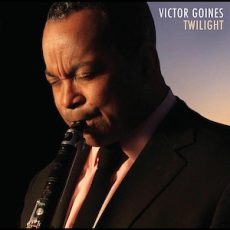
Daily Dose Of Jazz…
Victor Louis Goines, born August 6, 1961 in New Orleans, Louisiana. He graduated from St. Augustine High School in New Orleans and has been a member of Jazz at Lincoln Center Orchestra and the Wynton Marsalis Septet since 1993.
Goines has collaborated with Terence Blanchard, Dee Dee Bridgewater, Ruth Brown, Ray Charles, Bo Diddley, Bob Dylan, Dizzy Gillespie, Freddie Green, Lionel Hampton, Freddie Hubbard, B.B. King, Lenny Kravitz, Branford Marsalis, Ellis Marsalis, James Moody, Dianne Reeves, Marcus Roberts, Diana Ross, Eric Clapton, Wycliffe Gordon, and Stevie Wonder.
He has performed on more than 20 recordings, including the soundtracks for three Ken Burns documentaries and the 1990s films Undercover Blues, Night Falls on Manhattan, and Rosewood. He has composed more than 200 original works, including Jazz at Lincoln Center and ASCAP commissions.
He has also served on the faculties of Florida A&M University, University of New Orleans, Loyola University of New Orleans, and Xavier University of Louisiana. Goines is an artist for Buffet Crampon and Vandoren.
Saxophonist and clarinetist Victor Goines, who was director of the jazz program at Juilliard from 2000 to 2007, has served as president and chief executive officer of Jazz St. Louis since September 2022.
More Posts: bandleader,clarinet,history,instrumental,jazz,music,saxophone
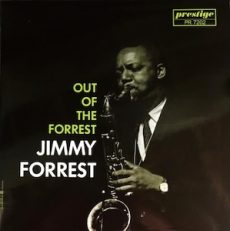
Requisites
Out Of The Forrest ~ Jimmy Forrest | By Eddie Carter
This morning’s spotlight shines on Jimmy Forrest, whom I first heard on the 1960 release, “Soul Battle,” with King Curtis and Oliver Nelson. Out of the Forrest (Prestige PRLP 7202) was his fifth outing as a bandleader and hit the stores in 1961. Jimmy was born in St. Louis, Missouri and built his reputation with the Count Basie, Duke Ellington, Andy Kirk, Fate Marable, and Jay McShann bands. Forrest demonstrated impressive versatility on the tenor sax, delivering energetic solos at brisk tempos. He also infused the lively pulse of bop at a medium beat, and he poured deep emotion into every ballad or standard. On this date, he’s supported by Joe Zawinul on piano, Tommy Potter on bass, and Clarence Johnston on drums.
My copy of the album is the 2023 Analogue Productions U.S. stereo audiophile reissue, matching the original catalog number. Side One opens with Bolo Blues, an original by Jimmy Forrest, which was one of his biggest hits. His relaxing introduction sets the melody off to a comfortable groove. The saxophonist has the solo spotlight to himself and delivers a thoughtfully crafted, laid-back interpretation, leading to the theme’s reprise and climax. The beat moves upward for the jazz and pop standard, I Cried For You, by Gus Arnheim, Arthur Freed, and Abe Lyman. Forrest’s brief introduction quickly segues to the ensemble’s medium theme. Jimmy goes to work first with a sparkling solo. Zawinul responds with a performance as refreshing as a cold drink on a hot day until the melody’s restatement and close.
I’ve Got a Right to Cry by Joe Liggins is a beautiful ballad beginning with a delicately expressive introduction by the quartet that continues as the melody unfolds. Jimmy, again, is the lone soloist and awakens poignant memories in a tenderly passionate interpretation before the theme’s return leads to a soft ending. This Can’t Be Love by Richard Rodgers and Lorenz Hart has long been a favorite of jazz musicians and vocalists. The trio’s introduction develops nicely into the ensemble’s lively theme. Forrest takes the first solo with stunning precision and enthusiasm on each note. Zawinul gets the last word and gives an excellent account before the theme is restated.
Side Two gets underway with By the River Sainte Marie by Edgar Leslie and Harry Warren. The rhythm section’s introduction segues into the quartet’s medium melody. Jimmy’s opening statement swings with a joyful spirit. Tommy takes a short, satisfying walk in his first solo next, then the leader makes his return for a concise comment leading to the finale. The quartet takes a nostalgic trip back in time with Yesterdays by Otto Harbach and Jerome Kern. Forrest’s gentle introduction sets things in motion for the foursome’s melody. Jimmy is the song’s only soloist, and his reading is very intimate, complemented by the rhythm section’s tender accompaniment ahead of a soft summation.
Crash Program by Jimmy Forrest and Clarence Johnston is off and running from the outset of the ensemble’s rapid theme. The saxophonist flies out of the gate with a flawlessly executed burst of speed. Joe continues soaring with infectious energy in the following solo. Johnston rounds things out with a swift finale, before the quartet returns to the theme and a quick exit. The album ends with a gorgeous rendition of That’s All by Alan Brandt and Bob Haymes. The pianist’s concise introduction sets the mood for Forrest’s sultry theme and elegantly phrased opening solo. Zawinul has a lovely interlude of tenderness preceding the leader’s return to take the song out softly.
Esmond Edwards supervised the initial session, and Rudy Van Gelder expertly managed the recording dials. Kevin Gray mastered this audiophile reissue from the original tapes at Cohearant Audio. The record was pressed on 180-gram vinyl and is dead silent until the music begins. The album’s sound quality is sensational, with an outstanding soundstage placing your sweet spot in the studio with the musicians. Out of the Forrest impresses not only from the music itself but also from the exceptional support of the ensemble. If you’re in the mood for a top-tier quartet and enjoy the tenor sax, I highly recommend Out of the Forrest by Jimmy Forrest for a spot in your library. If you’re a newcomer to his music, this album is a fine place to start your journey!
~ Soul Battle (Prestige PRLP 7223/PRST 7223) – Source: Discogs.com
~ I Cried For You, That’s All, This Can’t Be Love, Yesterdays – Source: JazzStandards.com
>© 2025 by Edward Thomas Carter
More Posts: choice,classic,collectible,collector,history,instrumental,jazz,music,saxophone
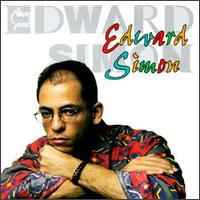
Daily Dose Of Jazz…
Edward Simon was born July 27, 1969 in Punta Cardón, Venezuela and when he was ten years old came to the United States to study at the Performing Arts School in Philadelphia, Pennsylvania. After graduating, he attended the University of the Arts in Philadelphia, where he studied classical piano, then the Manhattan School of Music, where he studied jazz piano.
In 1988, he recorded as a sideman with Greg Osby, then worked as a member of the band Horizon led by Bobby Watson. For the next eight years he was a member of Terence Blanchard’s band. He has also worked with Herbie Mann, Paquito D’Rivera, Bobby Hutcherson, Jerry Gonzalez, John Patitucci, Arturo Sandoval, Manny Oquendo, and Don Byron.
Simon recorded Beauty Within in 1994), his debut album as a bandleader, with Horacio Hernández and bass guitarist Anthony Jackson. That same year, he was a finalist in the Thelonious Monk International Jazz Piano Competition. Then the following year he composed Rumba Neurotica for the Relache Ensemble.
In 2003 Simon formed Ensemble Venezuela to combine jazz with the music of Venezuela. Given a commission by Chamber Music America to write Venezuelan Suite and recorded the album in 2012 with musicians from Venezuela, Colombia, and the U.S. He has played on several Grammy-nominated jazz albums. Besides his trio he leads the Sexteto Venezuela, the Afinidad Quartet, and the group Simon, Simon, & Simon with his brothers.
Wearing his educator hat he has taught at the New School for Jazz and Contemporary Music in New York City and has been artist in residence at Western Michigan University.
Pianist and composer Edward Simon continues to perform, compose and record.
More Posts: bandleader,compose,educator,history,instrumental,jazz,music,piano


